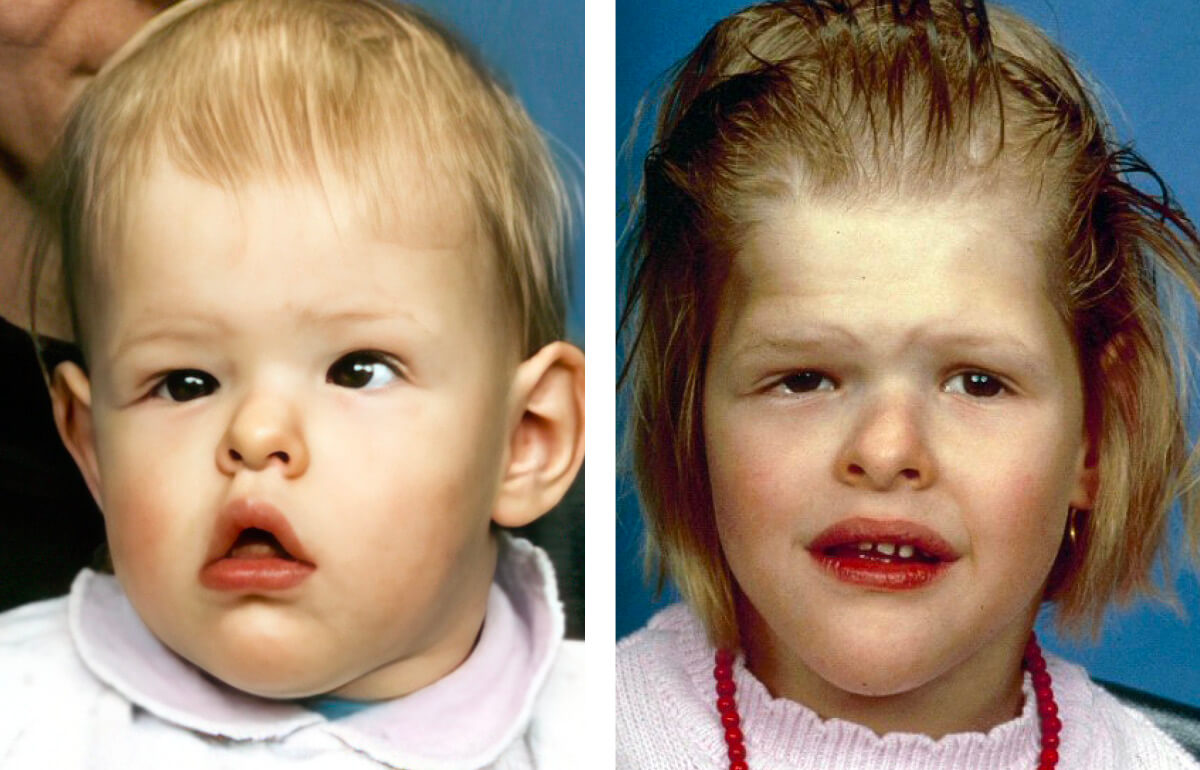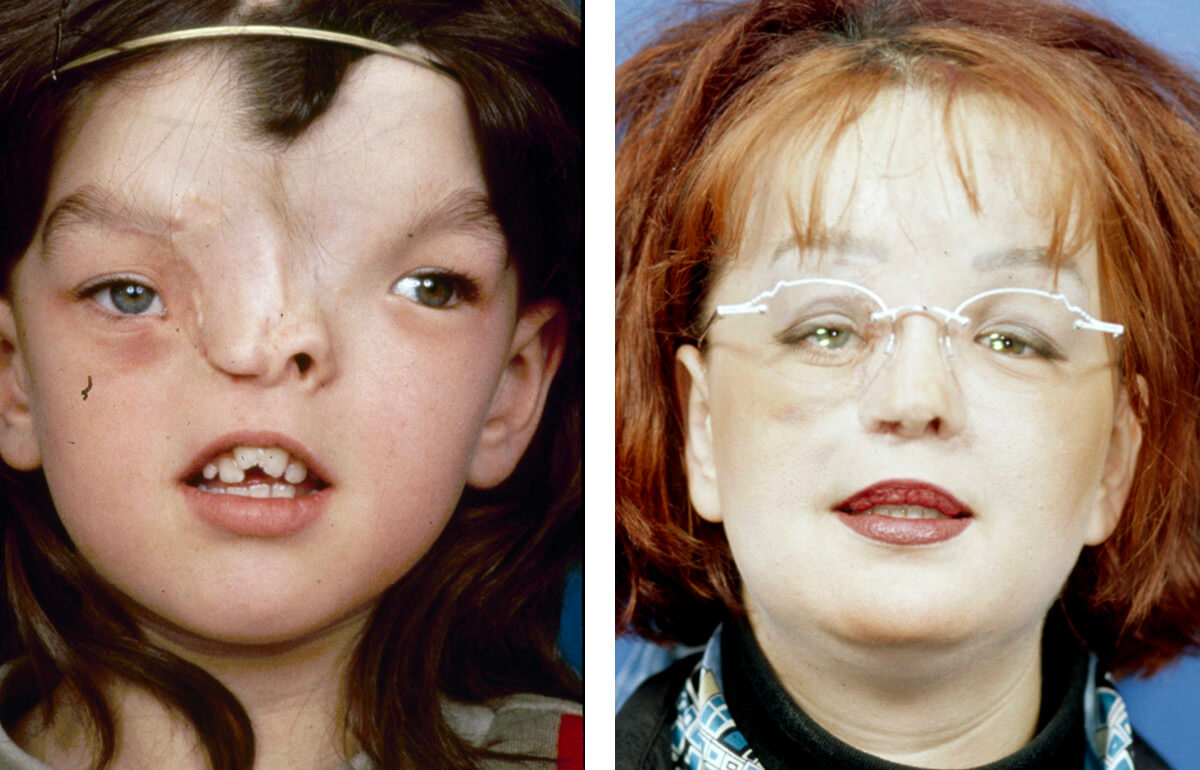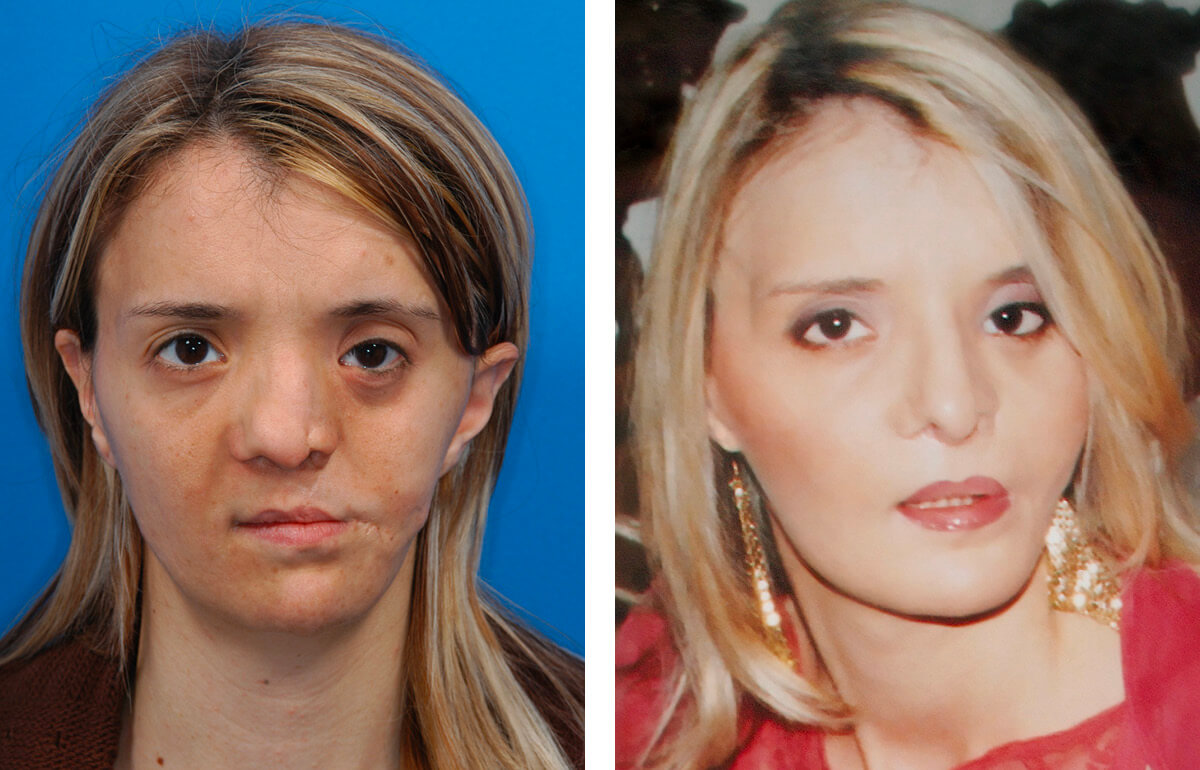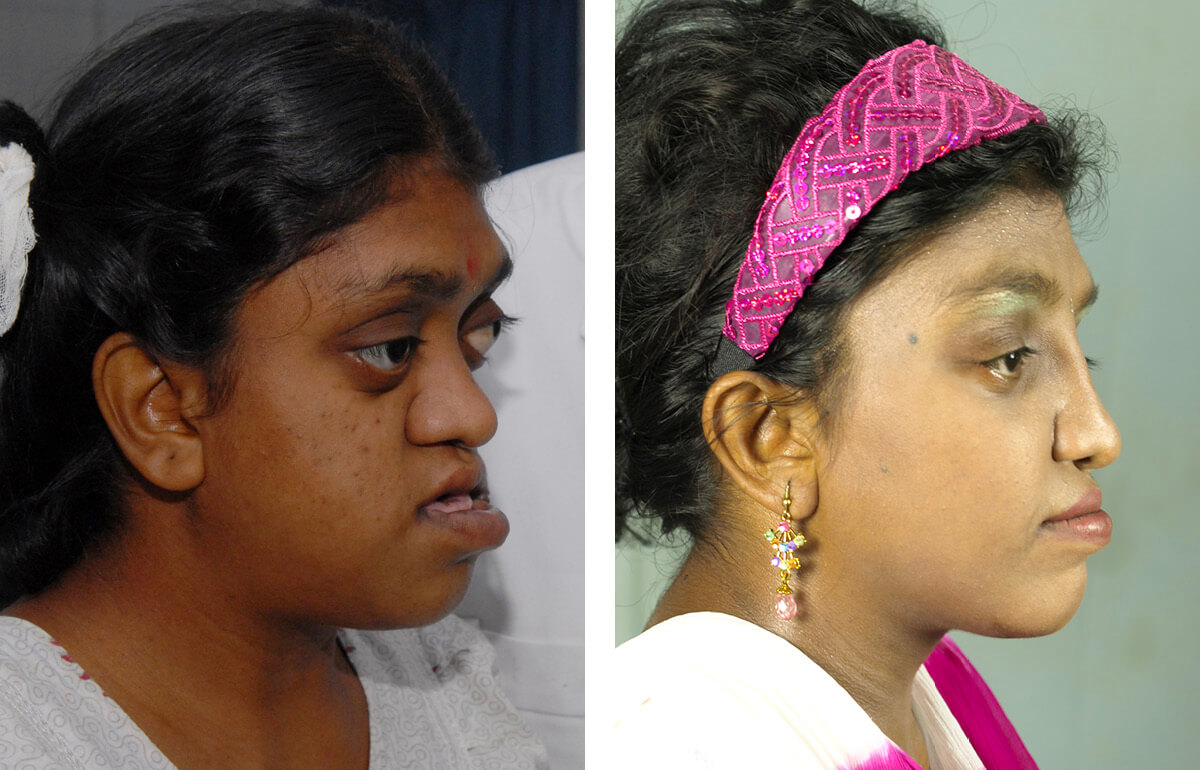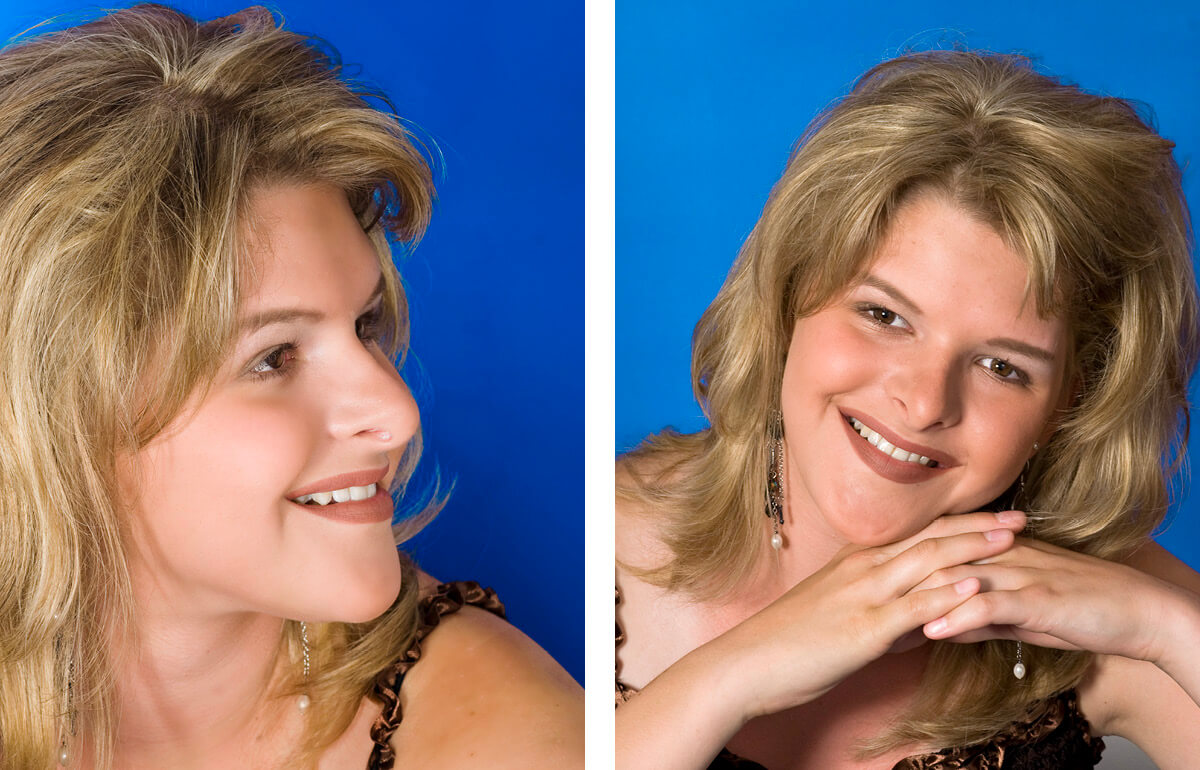
Anomalies are corrected in complex surgical procedures
This includes reconstructive tumour and accident surgery, surgery for severe disfigurements, primary and secondary cleft lip and palate surgery, and surgery of the anterior cranial base. Growth disorders which are congenital (so-called syndromes, face and jaw clefts) are corrected in complex surgical procedures.
Primary and secondary cleft surgery
The field of disfigurement surgery also includes the cleft lip and palate which Professor Sailer corrects, both at his clinic and in India, according to the Zürich protocol which he enlarged by the treatment protocol of severe craniofacial anomalies( s. G.Pfeifer, Thieme Verlag 1991,pages 85-91).
Secondary cleft surgery is of great importance at the clinic, i.e. the correction of growth disorders after the cleft lip and palate operation. These patients need to have their jaws positioned in an optimal position and soft tissue correction on the lips and nose must also be performed. Without these functional and aesthetic measures, these patients cannot be fully socially integrated and have little chance of private and professional development.
Anterior cranial base surgery
The most severe forms of anomalies, and also patients with cranial base fractures after accidents or tumours, fall within the field of anterior cranial base surgery.
Professor Sailer has more than 20 years of experience in anterior cranial base surgery in cases of disfigurement syndromes (hypertelorismus, Crouzon syndrome and cranio synostoses), accidents and tumours. Often these benign and cancerous tumours grow from the eye socket region, the sinus area or the upper jaw into the cranial base. Professor Sailer has himself developed techniques to eliminate the disorders mentioned without externally visible incisions or distorting the face, e.g. the technique of multiple craniofacial access surgery. This example shows a patient with a severe anomaly of the cranial base in which the eye distance is extremely great (hypertelorismus) and additionally numerous cleft formations of the face are present.

